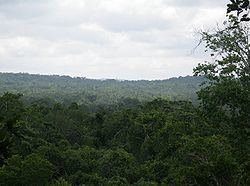

«With this new data it’s no longer unreasonable to think that there were 10 to 15 million people there,» said Mr Estrada-Belli, «including many living in low-lying, swampy areas that many of us had thought uninhabitable.» Maya civilisation, at its peak some 1,500 years ago, covered an area about twice the size of medieval England, with an estimated population of around five million. Radio 4’s In Our Time: The Maya Civilisation.How lasers revealed a lost city in the Cambodian jungle.In recent years Lidar technology has also been used to reveal previously hidden cities near the iconic ancient temple of Angkor Wat in Cambodia. «It’s a great problem to have though, because it gives us new challenges as we learn more about the Maya.» «The tricky thing about Lidar is that it gives us an image of 3,000 years of Mayan civilisation in the area, compressed,» explained Mr Garrison, who is part of a consortium of archaeologists involved in the recent survey. While Lidar imagery has saved archaeologists years of on-the-ground searching, the BBC was told that it also presents a problem. «Maybe, eventually, we would have gotten to this hilltop where this fortress is, but I was within about 150 feet of it in 2010 and didn’t see anything,» Mr Garrison told Live Science. But the Lidar survey revealed kilometres of fortification wall that the team had never noticed before. «We’ll need 100 years to go through all and really understand what we’re seeing.» Image copyright WILD BLUE MEDIA/CHANNEL 4 Image caption The Lidar images have surprised surveyorsĪrchaeologists excavating a Maya site called El Zotz in northern Guatemala, painstakingly mapped the landscape for years. « Lidar is revolutionising archaeology the way the Hubble Space Telescope revolutionised astronomy,» Francisco Estrada-Belli, a Tulane University archaeologist, told National Geographic. The group of scholars who worked on this project used Lidar to digitally remove the dense tree canopy to create a 3D map of what is really under the surface of the now-uninhabited Guatemalan rainforest.

The highly accurate measurements are then used to produce a detailed three-dimensional image of the ground surface topography.The wavelengths are measured as they bounce back, which is not unlike how bats use sonar to hunt.Millions of laser pulses every four seconds are beamed at the ground from a plane or helicopter.It is a sophisticated remote sensing technology that uses laser light to densely sample the surface of the earth.He believes the scale and population density has been «grossly underestimated and could in fact be three or four times greater than previously thought».ĭescribed as «magic» by some archaeologists, Lidar unveils archaeological finds almost invisible to the naked eye, especially in the tropics. «Everything is turned on its head,» Ithaca College archaeologist Thomas Garrison told the BBC. Results from the research using Lidar technology, which is short for «light detection and ranging», suggest that Central America supported an advanced civilisation more akin to sophisticated cultures like ancient Greece or China. He added, «I know it sounds hyperbolic but when I saw the imagery, it did bring tears to my eyes.» Image copyright WILD BLUE MEDIA/CHANNEL 4 Image caption Most structures are believed to be stone platforms for pole-and-thatch homes Mr Houston told the BBC that after decades of work in the archaeological field, he found the magnitude of the recent survey «breathtaking». «I think this is one of the greatest advances in over 150 years of Maya archaeology,» said Stephen Houston, Professor of Archaeology and Anthropology at Brown University. The researchers mapped over 810 square miles (2,100 sq km) in northern Peten.Īrchaeologists believe the cutting-edge technology will change the way the world will see the Maya civilisation. The landscape, near already-known Maya cities, is thought to have been home to millions more people than other research had previously suggested. Laser technology was used to survey digitally beneath the forest canopy, revealing houses, palaces, elevated highways, and defensive fortifications. Researchers have found more than 60,000 hidden Maya ruins in Guatemala in a major archaeological breakthrough.


 0 kommentar(er)
0 kommentar(er)
